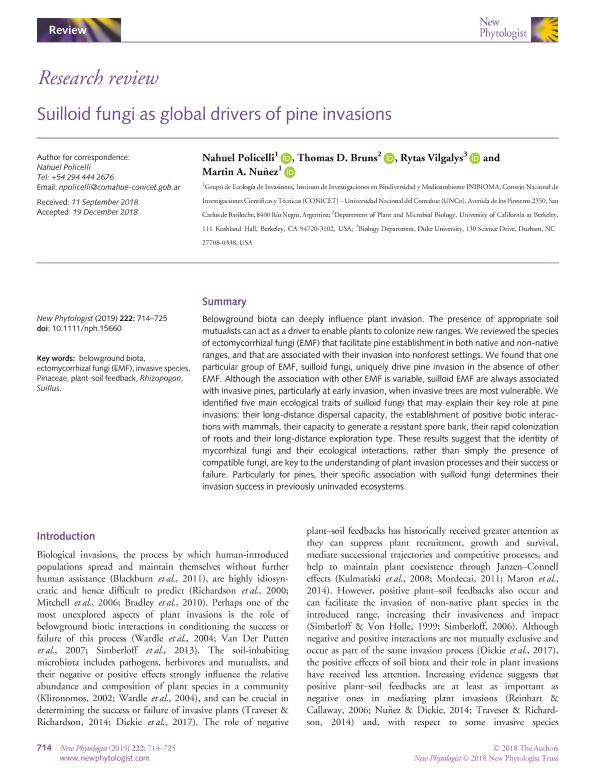Artículo
Suilloid fungi as global drivers of pine invasions
Fecha de publicación:
01/2019
Editorial:
Wiley
Revista:
New Phytologist
ISSN:
0028-646X
e-ISSN:
1469-8137
Idioma:
Inglés
Tipo de recurso:
Artículo publicado
Clasificación temática:
Resumen
Belowground biota can deeply influence plant invasion. The presence of proper soil mutualists can act as a driver that enable plants to colonize new ranges. We review the species of ectomycorrhizal fungi (EMF) that facilitate pine establishment in both native and non-native ranges and that are associated with their invasion into nonforest settings. We found that one particular group of EMF, suilloid fungi, uniquely drive pine invasion in the absence of other EMF. While the association with other EMF is variable, suilloid EMF are always associated with invasive pines, particularly at early invasion, when invasive trees are most vulnerable. We identified five main ecological traits of suilloid fungi that may explain their key role at pines invasion: their long distance dispersal capacity, the establishment of positive biotic interactions with mammals, their capacity to generate a resistant spore bank, their rapid colonization of roots, and their long distance exploration type. These results suggest that the identity of mycorrhizal fungi, and their ecological interactions, rather than simply the presence of compatible fungi, are key to understanding plant invasion processes and their success or failure. Particularly for pines, their specific association with suilloid fungi determines their invasion success in previously uninvaded ecosystems.
Archivos asociados
Licencia
Identificadores
Colecciones
Articulos(INIBIOMA)
Articulos de INST. DE INVEST.EN BIODIVERSIDAD Y MEDIOAMBIENTE
Articulos de INST. DE INVEST.EN BIODIVERSIDAD Y MEDIOAMBIENTE
Citación
Policelli, Nahuel; Bruns, Thomas; Vilgalys, Rytas; Nuñez, Martin Andres; Suilloid fungi as global drivers of pine invasions; Wiley; New Phytologist; 22; 2; 1-2019; 714-725
Compartir
Altmétricas




